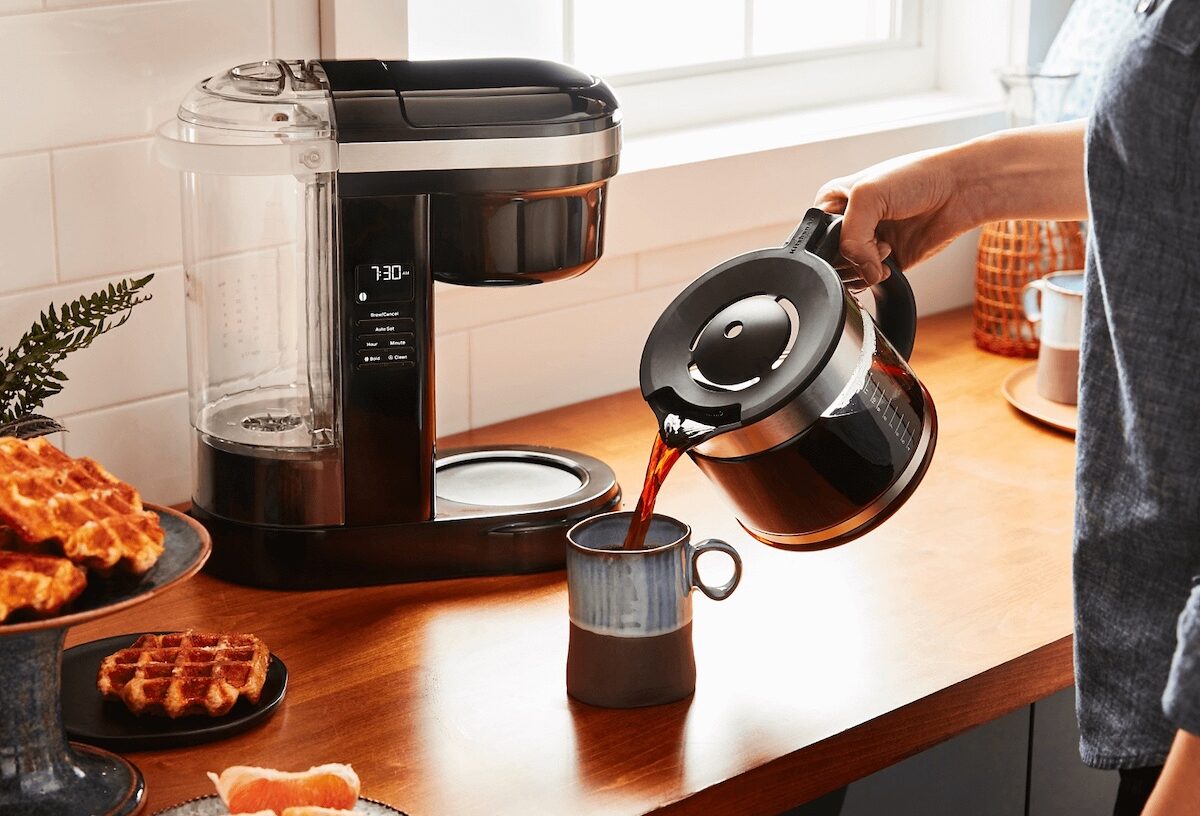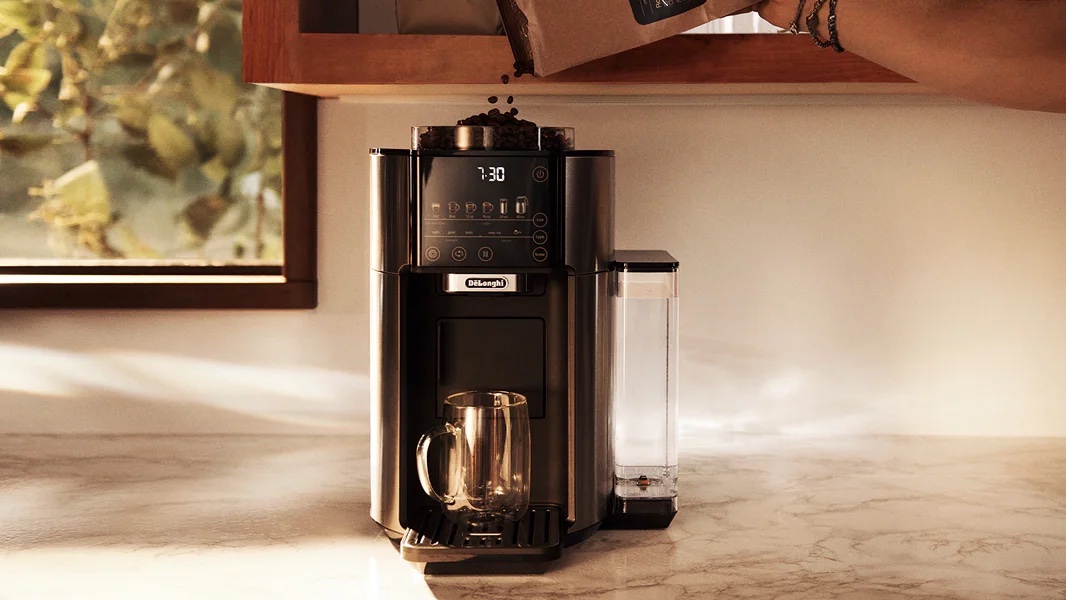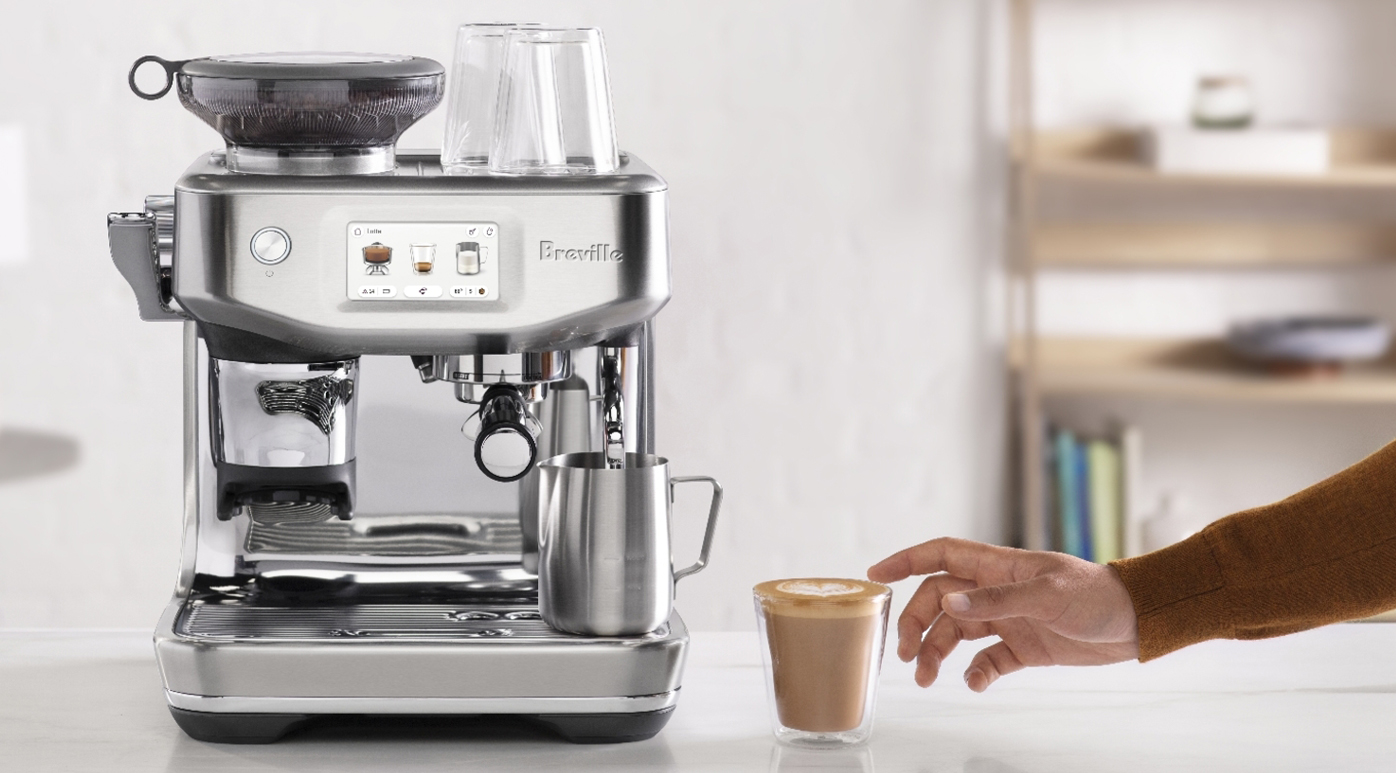No matter how careful you are in making every brew, your coffee machine is going to need to be thoroughly cleaned on a regular basis. Don’t worry: It isn’t anything you did! The natural oils of your coffee beans, along with the calcium in your tap water, are the likely causes of any mess or buildup. Here’s how to clean your coffee machine so you can keep brewing with delicious results.

How to maintain your coffee machine day-to-day
The first thing that you’re going to do to keep your coffee machine in tip-top shape is to stay on top of your daily cleaning tasks. That means rinsing—and washing—your brewing tools after every use. Make sure to soap and rinse your removable filter baskets, carafes, milk jugs, and portafilters. If your machine has a burner, wipe it clean on a daily basis when it’s cool. For a spill or drip tray, empty and wash it out every time it gets dirty.
The same rule applies to other small attachments, like milk frothers. Milk frothers and steam wands in particular need to be cleaned immediately: Because they’re hot, any milk or beverage proteins they come in contact with will cook onto their surface shortly after use. So, make sure you spray out your steam wands and wipe down your frothing wands immediately after every use.
These little tasks of daily maintenance will keep your coffee machine working like new for as long as possible. They’ll also keep it looking shiny and clean on top of stretching out how long you can go in between deep cleans. After cleaning, make sure you leave your washed and rinsed coffee machines or carafes open so they can dry thoroughly before you use them the next day—this is important in preventing bacterial growth.
How to descale your coffee machine
Your coffee machine will also need regular descaling, or decalcification, on a regular basis. This isn’t a daily task. Instead, as hard water minerals build up in your machine’s brewing mechanisms or water chamber/water reservoir, they’ll need to be dissolved and rinsed out. Some machines have an indicator light for this; others, you might receive with a descaling chart or in-app reminder.
When in doubt, make sure to descale your machine when it starts to brew a little oddly, you notice a strange flavour (often a bitter, metallic one) in your coffee, or you visually notice a buildup of calcium. For most machines and locations in Canada, you’ll need to do this about four times a year. In areas with harder water, you may need to descale more often; in areas with softer water, less often.
To descale your coffee machine, refer to your machine’s user manual if possible. This will recommend the appropriate cleaning solution or descaling tabs to use. You can also use a vinegar and water mix to clean your coffee machine:
- Remove any filters from your coffee machine, especially charcoal filters.
- Fill your water reservoir with a 1:1 mix of water and distilled white vinegar (that’s just regular cooking/kitchen vinegar).
- Set up your coffee machine as usual, using an empty paper filter without any grounds for a drip coffee machine.
- Press “brew.”
- For a deep clean, pause the brewing cycle halfway through. Wait 30-45 minutes, then resume the cycle.
- When your brewing cycle has completed, dump your vinegar mixture. Rinse out your carafes or filters, then replace. Fill your water reservoir with fresh water and run the cycle again.
- Repeat this brew cycle as many times as necessary to run the vinegar out of your coffee machine. When the “brewed” water no longer smells at all like vinegar, wipe down your carafe and machine as usual. You’re all done!
How to clean an espresso machine
Just like coffee machines and classic drip pots, espresso machines need to be cleaned on a regular basis. Make sure to wash out your portafilters, steam arm, drip tray, and baskets on a daily basis. To deep clean, refer to your machine’s manual. Use a cleaning tablet or solution to remove calcium buildup, and if instructed by your manual, remove any necessary parts for regular maintenance and cleaning. For espresso machines with water reservoirs, refer to your manual and flush out with a cleaning tablet or 1:1 water:vinegar cycle, just as you would with a coffee machine.
Your espresso machine may also recommend a seasonal backflush using cleaning solution and blind filters to clean the machine’s group head. If so, your product manual will tell you how to complete this process for your specific machine.
You are now ready to clean any coffee machine or espresso machine in your kitchen. Enjoy, and happy brewing!
Shop coffee machines and espresso machines at Best Buy today.






